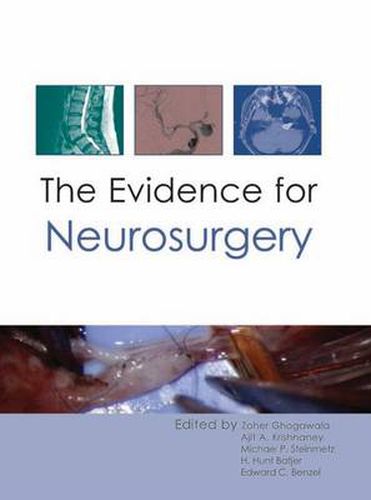Readings Newsletter
Become a Readings Member to make your shopping experience even easier.
Sign in or sign up for free!
You’re not far away from qualifying for FREE standard shipping within Australia
You’ve qualified for FREE standard shipping within Australia
The cart is loading…






Neurosurgery represents one of the most specialised arenas in modern medicine. Today, more than ever, patients with neurological disorders seek opinions from a variety of specialists and are often treated by teams of physicians. While consensus is often reached within institutions, regional variation is found between institutions. The lack of high quality clinical evidence contributes to this problem. This textbook aims to examine some of the most controversial areas of neurological surgery by applying the current evidence to illuminate our understanding of the pathophysiology of each disease and the outcomes from surgical and non-surgical treatments. Today’s neurosurgeon must be able to apply current evidence in the clinic to determine, for example: Which aneurysm should be treated with endovascular or open vascular techniques? Which degenerative lumbar spine should be fused, decompressed, or both and which spine’s deformity should be corrected and to what extent? Whether an acoustic neuroma should be treated, followed, removed, or irradiated? This is a textbook that will challenge current dogmas in many instances, provide an organised framework for understanding where current evidence can be applied clinically, and illustrate where gaps in the evidence exist and how these deficiencies may be filled in the future. In the first chapter, Clinical Evidence , the reader will gain an understanding of the levels of clinical evidence and will learn what types of study designs are appropriate and in which situations. The textbook is then divided into six sections: Spine, Vascular, Tumour, Paediatrics, Functional, and Trauma. Each section’s editors have provided a brief synopsis of the specific challenges within each field followed by chapters that provide the current evidence in areas where clinical uncertainty lies.
$9.00 standard shipping within Australia
FREE standard shipping within Australia for orders over $100.00
Express & International shipping calculated at checkout
Neurosurgery represents one of the most specialised arenas in modern medicine. Today, more than ever, patients with neurological disorders seek opinions from a variety of specialists and are often treated by teams of physicians. While consensus is often reached within institutions, regional variation is found between institutions. The lack of high quality clinical evidence contributes to this problem. This textbook aims to examine some of the most controversial areas of neurological surgery by applying the current evidence to illuminate our understanding of the pathophysiology of each disease and the outcomes from surgical and non-surgical treatments. Today’s neurosurgeon must be able to apply current evidence in the clinic to determine, for example: Which aneurysm should be treated with endovascular or open vascular techniques? Which degenerative lumbar spine should be fused, decompressed, or both and which spine’s deformity should be corrected and to what extent? Whether an acoustic neuroma should be treated, followed, removed, or irradiated? This is a textbook that will challenge current dogmas in many instances, provide an organised framework for understanding where current evidence can be applied clinically, and illustrate where gaps in the evidence exist and how these deficiencies may be filled in the future. In the first chapter, Clinical Evidence , the reader will gain an understanding of the levels of clinical evidence and will learn what types of study designs are appropriate and in which situations. The textbook is then divided into six sections: Spine, Vascular, Tumour, Paediatrics, Functional, and Trauma. Each section’s editors have provided a brief synopsis of the specific challenges within each field followed by chapters that provide the current evidence in areas where clinical uncertainty lies.